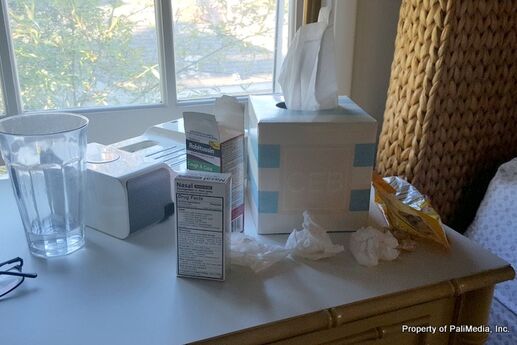Spotting Your Child's Cold Symptoms -- at Any Age
When adults get hit with the flu, there's no mistaking it. You're feverish, your head feels stuffed up, and you ache everywhere. But with kids, the signs aren't always as easy to detect. Young children with the flu can run the whole gamut of symptoms," says Dr. Martha Snyder, a pediatrician and assistant professor of pediatrics at Duke University School of Medicine."Some children have the mildest of mild symptoms, while for others, symptoms are very severe.”
Below is your guide to spotting flu symptoms no matter what your child's age, and ways to bring relief.
Infants Under Six Months
Babies in the first six months of life are at the greatest risk of complications from the flu, says Snyder, because their immune system is not fully mature yet and their very small airway makes it easy for them to experience respiratory distress.
If your infant has a fever, call your doctor and watch for other signs of illness, such as dehydration. "When babies this age don't feel good, they usually don't want to drink," she adds. Provide plenty of water to keep an infant hydrated.
Children Six Months to 2 Years
Kids under the age of 2 who come down with the flu often have respiratory symptoms (cough, runny nose, sneezing), high fevers (sometimes as high as 104 F), diarrhea and vomiting."But while many kids have all of these symptoms, others may only have one," says Snyder.
Recognizing the early signs in toddlers is especially important, she says, because they can also get dangerously dehydrated very quickly. In addition, because of their smaller airways, babies can quickly progress to having wheezing and labored breath, which requires medication. Signs that a child's breathing is compromised include wheezing, fast breathing or shortness of breath, and nose flaring.
Children 2 to 4 Years
A child who can't talk yet (or can't talk well) obviously can't tell you that his body aches all over, so you need to be alert for behavioral changes, says Snyder. For instance, in many cases, children with the flu will have shaking chills and refuse to walk, because their legs are very achy.
With kids under the age of 4, you really have to watch them to see how they're acting. Respond to anything that seems out of the ordinary," adds Snyder. "Young kids often have a limp look to them. Or they're so uncomfortable they just want to be held."
Children 4 to 6
Once kids can tell you how they feel, listen for complaints similar to an adult's. But be aware that if your child is under the age of 6, oral over-the-counter cold and flu medications are not recommended. "You should never give children this age decongestants, cough suppressants and other OTC cold remedies, because of the side effects," says Snyder.
But there are other things you can do. "It's OK to give your child acetaminophen or ibuprofen for fever or pain reduction," adds Snyder. It's also safe to apply topical soothers to help relieve symptoms. And some children don't mind saline nasal sprays for stuffy noses but be careful not to use them too often (more than six times a day), since overuse can cause swelling of a child's nasal passages.
Other beneficial non-drug treatments for colds and flu include chamomile tea with honey, and a cool mist humidifier. Just be sure to use one that has a humidity gauge and to keep the level at no higher than around 50 percent to avoid a mold problem.
Children Over 6
For children over the age of 6, symptoms are essentially the same as adults'. And at this point, OTC decongestants and cough suppressants are generally safe, although they're not recommended for children with certain health conditions. For instance, if your child is taking medication for ADHD, ask your doctor before giving your kid a decongestant, since the combination of the two drugs has been shown to cause heart problems.
In addition, kids with asthma or any kind of respiratory problem should stay away from cough suppressants, says Snyder, because these products may make it harder for them to clear secretions from their lungs, which can lead to pneumonia.
Like this article? Get more by following us @FaceEveryDay or friending us on Facebook at Beauty & Confidence.






